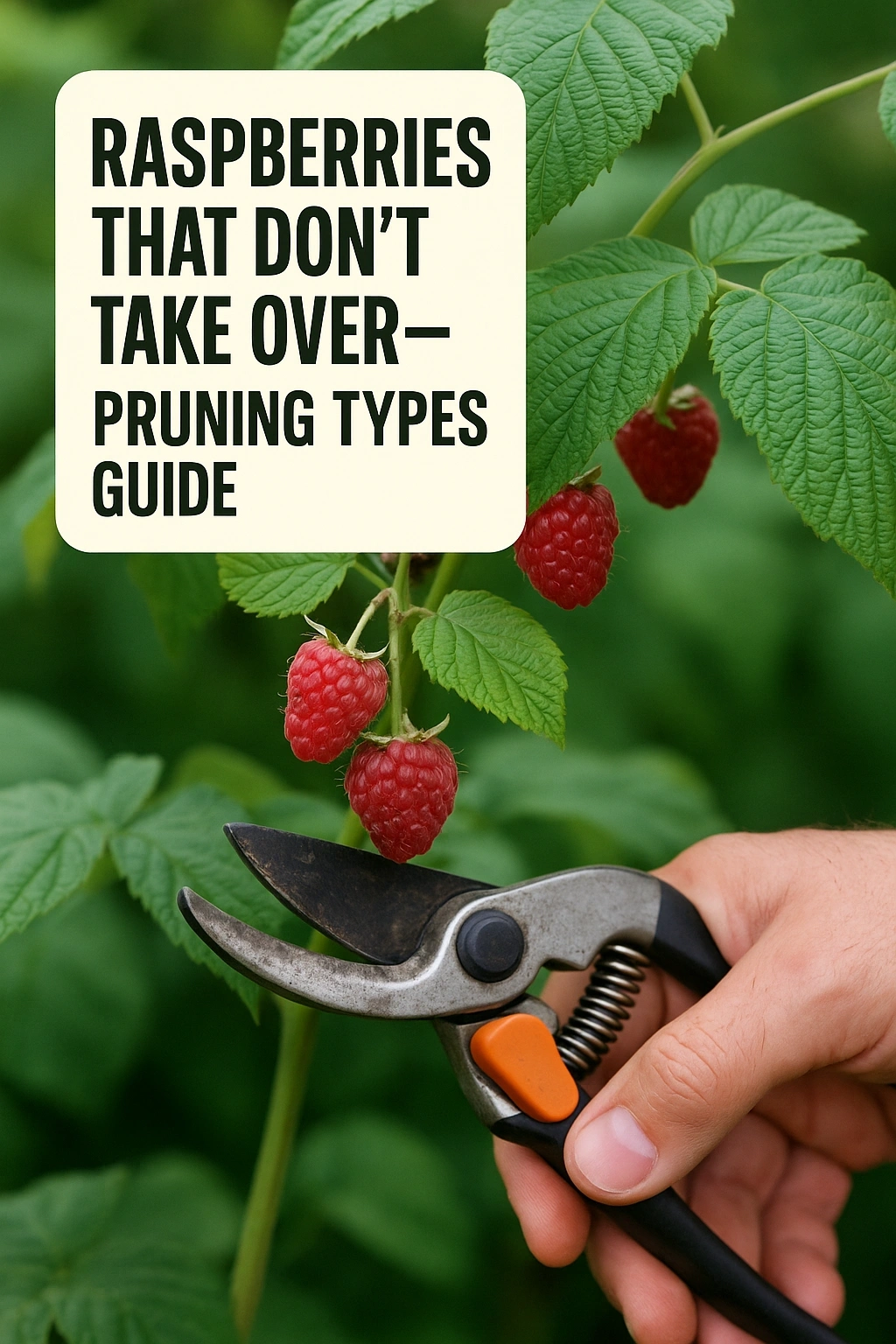
Raspberries are a delightful addition to any garden, offering delicious fruit and vibrant color. However, their vigorous growth can sometimes be overwhelming. Understanding the different pruning types and techniques can help you manage your raspberry plants effectively, ensuring they thrive without taking over your garden space. This article delves into the essential pruning methods that will keep your raspberry plants in check while maximizing your harvest.
The Importance of Pruning Raspberries
Pruning is a crucial practice for raspberry cultivation. It not only controls the growth of the plants but also improves air circulation, sunlight exposure, and fruit quality. Proper pruning techniques can prevent overcrowding, reduce disease risk, and promote healthier plants. By understanding when and how to prune, you can achieve a balanced raspberry patch that yields plenty of fruit without becoming unruly.
Types of Raspberries and Their Pruning Needs
There are two main types of raspberries: summer-bearing and everbearing (also known as fall-bearing). Each type has specific pruning requirements that cater to its growth cycle and fruiting habits. Understanding these differences is key to maintaining a well-managed raspberry patch.
Summer-Bearing Raspberries
Summer-bearing raspberries produce fruit on two-year-old canes, or floricanes. After harvesting, it is essential to prune these canes back to ground level to encourage new growth for the following year. This type of pruning helps manage plant size and promotes healthy cane development.
Everbearing Raspberries
Everbearing raspberries can produce fruit on both first-year canes (primocanes) and second-year canes. For those looking for a continuous harvest, a selective pruning method is recommended. You can either prune all canes to the ground after the fall harvest or leave some first-year canes for an early summer crop. This flexibility allows you to control growth while enjoying a bountiful harvest.
Pruning Techniques for Managing Growth
Effective pruning techniques are essential for keeping your raspberry plants productive and manageable. Understanding these methods will help you establish a well-structured growth pattern and facilitate easier maintenance.
Thinning Canes
One of the first steps in pruning raspberries is thinning the canes. This involves removing weak or overcrowded canes to improve air circulation and sunlight penetration. Aim to keep about four to six of the healthiest canes per plant. Thinning not only helps prevent disease but also allows the remaining canes to produce larger, healthier fruit.
Pinching and Tipping
Pinching back the tips of the new growth can encourage bushier plants and promote lateral branching. This technique is especially useful for everbearing varieties, as it stimulates the development of additional fruiting branches. Regularly pinching back unwanted growth can help you control the overall size of your raspberry plants.
Timing Your Pruning for Optimal Results
Timing is critical when it comes to pruning raspberries. The right season can greatly influence the health and productivity of your plants. Understanding the best time to prune will ensure that your raspberries flourish.
Winter Pruning
Winter, when the plants are dormant, is the ideal time for a major pruning session. Conduct this pruning in late winter or early spring before new growth begins. This timing allows you to remove any dead or damaged canes and prepare the plants for a vigorous growing season. During this period, you can also assess the overall health of your plants and make necessary adjustments.
Summer Pruning
Summer pruning is a lighter pruning method that focuses on maintaining the shape of the plants and removing any excess growth. This can be done after the harvest, ensuring that the plants remain manageable without sacrificing future fruit production. Regularly monitoring your raspberry plants throughout the summer will help you identify any necessary adjustments.
Common Mistakes to Avoid When Pruning Raspberries
Even experienced gardeners can make mistakes when pruning raspberries. Being aware of common pitfalls can help you avoid damaging your plants and ensure a healthy harvest.
Over-Pruning
One of the most common mistakes is over-pruning, which can lead to reduced fruit yield and weak plants. Always aim to keep a balance between removing excess growth and preserving enough canes for fruit production. Remember that healthy plants need adequate foliage for photosynthesis and overall vigor.
Ignoring Disease Signs
Failing to monitor your raspberry canes for signs of disease can result in the spread of pathogens. Always inspect your plants before pruning and remove any diseased canes immediately. This proactive approach will help maintain the health of your raspberry patch.
FAQs About Raspberry Pruning
How often should I prune my raspberry plants?
Pruning should be done annually, with a major session in late winter or early spring and lighter maintenance pruning during the summer. This helps to promote healthy growth and fruit production.
Can I prune raspberries too late in the season?
Yes, pruning too late can disrupt the growth cycle and affect fruit production. It is best to prune before new growth begins in spring or after the harvest in summer.
What tools do I need for pruning raspberries?
A good pair of sharp pruning shears is essential for clean cuts. You may also need gloves and loppers for thicker canes. Ensure all tools are clean to prevent disease transmission.
Do I need to fertilize after pruning?
Yes, applying a balanced fertilizer after pruning can support new growth and enhance fruit production. Ensure to follow the recommended guidelines for your specific raspberry variety.
Can I grow raspberries in containers?
Yes, raspberries can be successfully grown in containers, but they will require careful pruning and maintenance to manage their growth. Choose a large enough container and provide proper support for the canes.
By understanding the different types of raspberries, their specific pruning needs, and the timing and techniques for effective pruning, you can enjoy a thriving raspberry patch that enhances your garden without overwhelming it. With careful attention and proper care, your raspberry plants can produce delicious fruit for many seasons to come.
